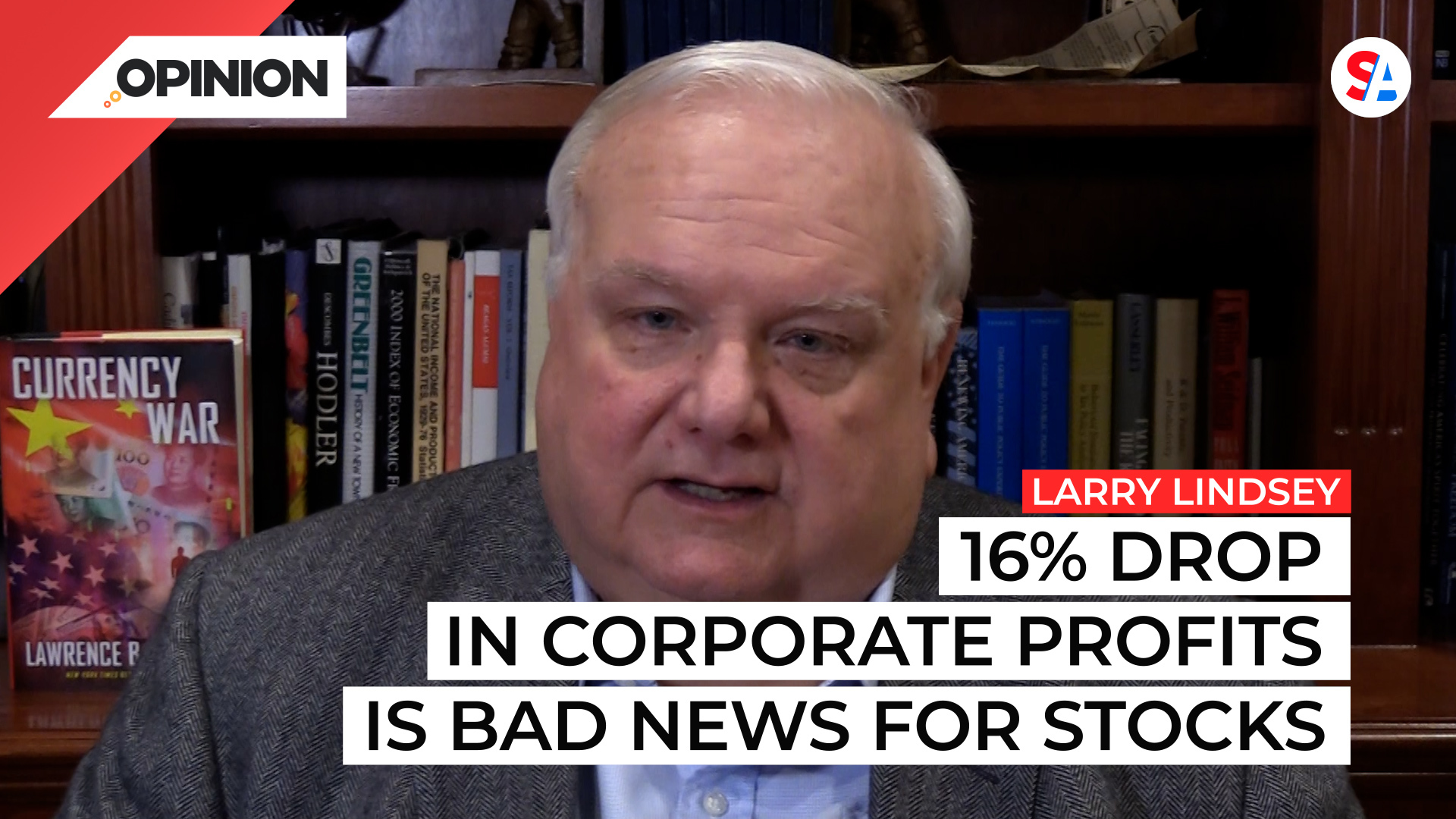
Commentary
-
Our commentary partners will help you reach your own conclusions on complex topics.
Happy New Year, everyone. It should be a happy new year for America’s workers who have been seeing their wages go up much, much less than inflation. This year…2023, that process should reverse and wages will go up faster than inflation.
Why? Well, first of all, the labor market is very, very tight. We have more than 10 million job openings that are being posted. Whereas we only have six million unemployed people, and maybe one and a half million more that are called loosely attached or marginally attached to the labor force. As a result, you know, we’ve got roughly 1.7 jobs for every unemployed person out there.
Lots of folks are finding this is a problem. For example, the National Federation of Independent Businesses, which is a small business group, surveyed their members and found that 60% of them are trying to hire. But 92% of that 60% say there are few or no qualified workers out there to be hired. So it seems to be that even those who are looking for work, may not make the cuts.
Also one of the country’s largest employers, the United States Army, is going to fall 25% below its target recruitment for this year. They try and recruit 60,000 new people; they’re only getting 45,00.
One of the reasons for that is a lack of qualifications. By their estimate, just 23% of young people make the minimum requirements to join the army. It might be a matter of physical fitness, it might be a matter of drug use, whatever. Most of the applicants out there are unqualified for the job.
In addition, we’re having problems with an aging population. In the year 2000, just 12.4% of the population was over 65. Last year, that was up to 17%, and it’s going to grow at another four-tenths of a percent a year, meaning that by 2025, we’re going to have 19% of the population over 65. That shrinks the available supply of labor.
Now, some people over 65 still work, but most do not. In addition, we have, because of the tight labor market and the high demand as I mentioned, real weekly earnings are down 4% since the end of 2020. On the other hand, productivity – how much each worker produces – is only down 1.6%. So even though workers are tough to hire, they’re still very profitable to hire. You’re getting just 1.6% less work, but you’re paying 4% less for them if you’re an employer. Meaning that workers are now about two and a half percent more profitable to hire than they were before the pandemic started.
Well, it’s already showing up in higher wages. The Atlanta Fed wage tracker, which looks at how much each individual workers pay goes up, found on average they’ve been going up at 5.8% over the last three months. On the other hand, inflation is only going up 3.8%. So at least in the last three months, we’ve had a situation where workers have been able to begin to catch up. That should continue.
Now, real wages going up has to come out of somewhere, and the place it’s going to come out of is profits. So if you get workers back to earning what they earned before the pandemic, then you’re going to see a one-sixth or 16% drop in corporate profits. That’s going to be bad news for stock prices. In addition, interest rates are going up. So bonds are becoming more profitable to own than stocks. Also, stocks are very, very overvalued. In the 10 years ending in 2021, we saw stock prices go up or all asset prices, capital prices go up by 124%; GDP only by 49%. So when the value placed on things like stocks goes up two and a half percent, excuse me, two and a half times as much as output, you know that they’re probably overpriced.
You can use a variety of metrics, but the odds are that from their peak at the end of 2021, stock prices are likely to fall between 35 and 40 percent. Now, they’re already down about half that amount. But you could see the Standard and Poor’s index, which is now around 3800, down from a high of 4800.. and up within 200 points or so, of the 3000 level.
We still have a big drop to fall.
-
President Biden just isn’t cool
For some Americans, politics is only about policy, while others prioritize core values, ideas, aspirations or beliefs. Still, for others, politics may be a reflection of culture, where voting serves as a symbolic act to proclaim cultural group identity. But for some Americans, who they vote for and support is more of a popularity contest,…
-
Federal Reserve policy should be more restrictive
The American economy is booming, with high GDP growth, record-low unemployment, and wage gains for median workers. Over the past few quarters, U.S. economic growth indicators have consistently outperformed official projections. But the U.S. Federal Reserve recently conceded that its policies might be too restrictive, hindering the full potential of the U.S. economy, which the…
-
Celebrate tight labor market, but don’t cut interest rates
While President Joe Biden has been celebrating U.S. economic success, many Americans are still unhappy about the economy. So who’s right? The most recent jobs report for February showed that while the unemployment rate rose slightly to 3.9%, job gains were higher than expected, with the total coming in at 275,000 versus the expected increase…
-
Social and economic class will define 2024 election
Following in the footsteps of FDR, Democratic support in the past hundred years has drawn largely from working-class individuals, labor unions, and civil society organizations. Republican support, conversely, tended to rely upon larger corporate donations and the support of high-income individuals. In 2024, these traditional roles are evolving, and the new reality of campaign finance…
-
Black swan events make next US president difficult to predict
In November, Americans will cast their votes to elect a new president and Congress. Despite significant indicators suggesting dissatisfaction with the economy, posing a challenge for President Biden’s potential reelection, predicting the winner remains challenging due to all the variables at play. Straight Arrow News contributor Larry Lindsey utilizes a recent Gallup poll to offer…
Latest Opinions
-
 Getty Images
Getty Images
More Dems signal willingness to save Johnson from speakership vote
-
 Getty Images
Getty Images
NASA worm returns as interest in space grows around the world
-
 Reuters
Reuters
SF DA seeks restitution for drivers delayed by Golden Gate Bridge protest
-
 Getty Images
Getty Images
Mexico disrupts China’s potential plan to infiltrate US EV market
-
 Getty Images
Getty Images
Free speech fight after USC cancels valedictorian’s speech
Popular Opinions
-
In addition to the facts, we believe it’s vital to hear perspectives from all sides of the political spectrum.


